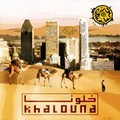UNESCO’s Intangible Cultural Heritage Committee 2024, meeting in Asuncion, Paraguay, on Tuesday, added henna to the list of 19 new elements requiring urgent safeguarding.
«Henna symbolizes the life cycle of an individual, from birth to death, and is present at the major stages of a person's life», states the UNESCO text defending its inclusion as intangible heritage.
«Perceived as sacred by communities in Northern Africa and the Middle East, its leaves are harvested twice a year to create a paste», wrote UNESCO.
? FLASH INFO
— UNESCO en français (@UNESCO_fr) December 3, 2024
Nouvelle inscription sur la Liste du #PatrimoineImmatériel : Le henné : rituels, esthétique et pratiques sociales, ??, ??, ??, ??,??, ??, ??, ??, ??, ??, ??, ??, ??, ??, ??, ??.
Félicitations !https://t.co/uaOG69gqvK #PatrimoineVivant pic.twitter.com/Z729lE2Dng
The file for henna safeguarding, a tradition that is part of Morocco’s cultural rituals, has been submitted under the same banner as 16 other countries: United Arab Emirates, Algeria, Bahrain, Egypt, Iraq, Jordan, Kuwait, Mauritania, Morocco, Oman, Palestine, Qatar, Saudi Arabia, Sudan, Tunisia, and Yemen.
«Henna paste is commonly used by women for adornment. It is a symbol of joy and is used in everyday life and on festive occasions such as births and weddings. Its use is frequently accompanied by oral expressions and is linked to centuries-old societal rules and traditions», explains UNESCO.
In Morocco, this plant is used to tattoo the forearms and feet of women taking part in weddings, as well as to dye hair and bring good luck to babies.





 chargement...
chargement...













